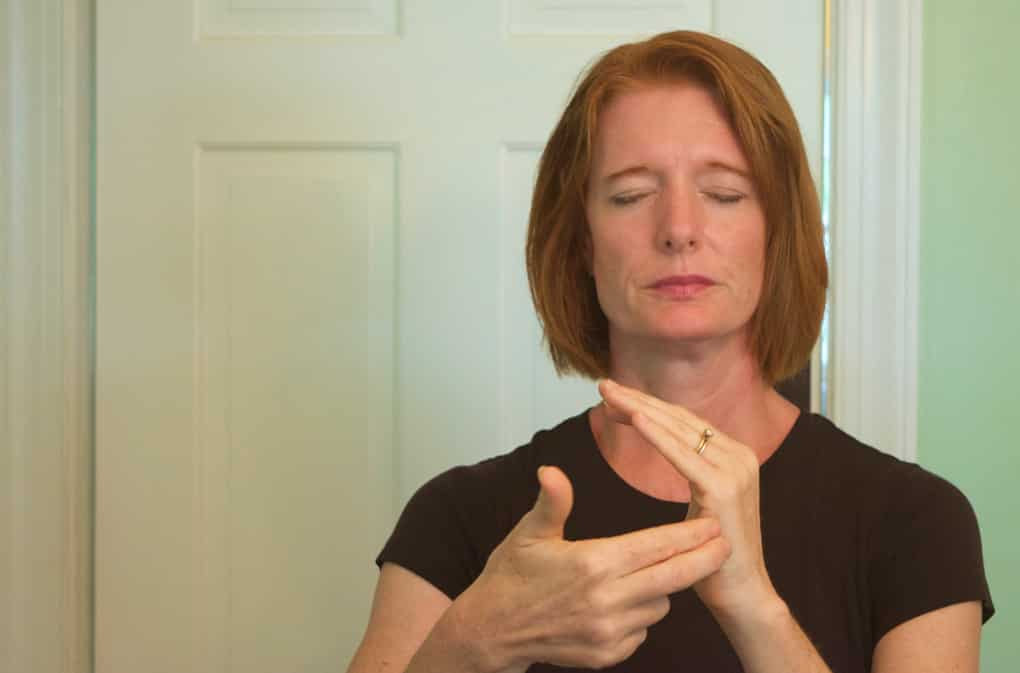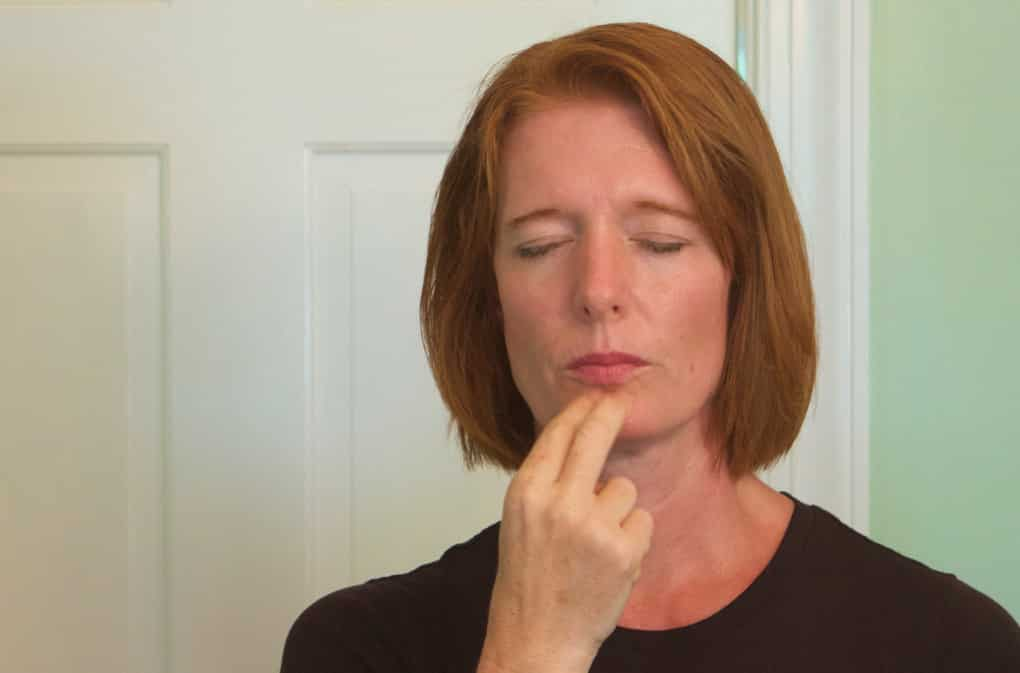Tapping for Health

Understanding How EFT or Tapping Works.
If you’ve never heard of the Emotional Freedom Technique (EFT) or Tapping, you’re not alone, but once you’ve tried it, you may just be hooked for life. Tapping combines Eastern medicine with Western psychology to create a technique that empowers you to identify and clear many emotional and sometimes physical issues. The best part – you can do it anytime, anywhere, all by yourself, and it’s one of the most affordable self-help techniques around because you’re able to learn it and do it for free.
I’ve tried tapping myself. To be completely upfront, for me, it’s worked in some cases and hasn’t in others. But there are many people from all walks of life who say it’s helped them deal with anxiety, remove longtime emotional blocks, healed them from chronic pain and helped them to overcome Post-Traumatic Stress Disorder (PTSD). In fact, the U.S. Veterans Administration has approved it as a “generally safe” therapy that can officially be used with veterans. That’s why I want you to understand what it is, how it works and how you can tap for health. Then you can decide for yourself whether you want it to become another tool in your health and wellness toolbox.

Note: As an Amazon Associate I earn from qualifying purchases made through some of the links included on this page. You can read my disclosure policy here.
What is EFT?
According to the website of Gary Craig, who is considered to be the father of EFT, “It integrates the Chinese meridian system into the therapy process by tapping on meridian points with your fingertips.” The tapping part is similar to the idea of acupuncture, with no needles involved, and the therapy part involves using language that is related to specific issues that you want to address. EFT Advanced Practitioner and clinical social worker Leslie Vellios from Stressless with EFT told me that “EFT enables the person, sometimes through the guidance of a practitioner, sometimes on their own, to regulate the dis ease, so not disease, but the dis ease in their body.” In other words, EFT helps to clear whatever it is that is causing dysregulation in the body.

The Science Behind EFT
The next question most people ask about EFT after “What is it?” is “What kind of scientific proof is there that it really works?” To that, EFT practitioners such as Leslie answer, “Plenty.” She cites research done by Dr. Peta Stapleton, Clinical and Health Psychologist and author of The Science Behind Tapping (Affiliate Link), as well as other scientific evidence of actual changes in cortisol levels. One of those studies1 examined the changes in cortisol levels and psychological distress symptoms of 83 subjects receiving an hour-long intervention. They were randomly assigned to either an EFT group, a psychotherapy group receiving a supportive interview or a no treatment group. Salivary cortisol tests were performed immediately before and 30 minutes after the intervention. The EFT group showed statistically significant improvements in anxiety, depression and the overall severity of symptoms. The EFT group also experienced a significant decrease in cortisol levels compared with the decrease observed in the group receiving supportive interviews and the no treatment group.
In a separate paper2, National Institute for Integrative Healthcare President Dawson Church, PhD defines Clinical EFT and shows it to be an “evidence-based” practice that has met American Psychological Association standards as an “efficacious’ or ‘probably efficacious’ treatment for a number of conditions, including anxiety, depression, phobias, and PTSD.” He also cites studies that show its effectiveness in helping to decrease physical pain as well as serving as an effective aid in weight loss and in reducing cravings. In another study3 that focused on the physiological effects of EFT on the central nervous system, Church, Stapleton and other researchers found that “EFT results in positive health effects as well as increased mental well-being.”
While Leslie Vellios acknowledges that EFT isn’t as common as acupuncture, meditation or yoga, she believes that “The more people that try it and see the results that they’re getting, the more mainstream it will become because now we have the science to back it.”
“These people are nuts. What are they doing? I’m a therapist. And they’re touching their face and talking nonsense. And by day two, I was like, ‘This is unbelievable.” – Leslie Vellios
A Personal Experience with EFT
While Leslie has certainly incorporated EFT into her professional practice, it was personal experience that brought her to the technique in the first place. She was trying to lose weight and went to a three-day session after hearing about it from a friend. She quickly learned that her experience with the technique would be less about weight loss and more about changing her life. She thought at first, “These people are nuts. What are they doing? I’m a therapist. And they’re touching their face and talking nonsense. And by day two, I was like, ‘This is unbelievable.”
One of the things that Leslie suffered from was severe anxiety. When she started tapping, the first thing she noticed was that the anxiety level started going down. She started realizing that she wasn’t reacting to things that would normally make her anxious and many things in her life started to change. “My relationship with my husband improved 100 percent. My career changed. I stopped, I actually retired early and do this full time. I lost some weight. That’s still something that I’m working on. But I had some success and definitely a lot of success with cravings and things of that nature. And even my relationship with my children and money. Everything shifted.”
Because of her personal experience with EFT and the results that she’s seen others experience, Leslie believes that most people, if not everyone, could benefit from the technique. That includes those experiencing anxiety, stress, depression, PTSD, weight gain, food cravings, money issues, work issues, pain, disease and any other issue you can imagine. Leslie cautions though that if people are suffering from some sort of post-traumatic stress that they look for a practitioner that has a therapy background. That way, if a trauma does come up, they have someone experienced who can help them deal with that further.
The same thing is true with anyone in pain or dealing with disease. She stresses that those people should continue to see their doctor while EFT can help to treat the emotional component of the pain. Her philosophy is that “You don’t use EFT in lieu of your treatment, use it in conjunction with your treatment.”

How Does EFT Work?
You can see for yourself how EFT works in Leslie’s free How to Tap video, but I’ve also broken it down here so that you can have the process in writing to go back and refer to. Once you know these steps, you’ll be off and running for doing it on your own.
- Create a setup statement. The setup statement is always, “Even though (fill in the problem here), I love and accept myself.” For example, if you’re feeling stressed about your job, you can say, “Even though I’m feeling stressed about my job, I love and accept myself.” The key is to try to be as specific as possible about what the issue is.
- Create a reminder statement. This is the problem you’re facing or the middle portion of your setup statement and will be what you say as you tap. As you go through, you may want to add different elements about whatever it is that is causing your problem. For example, you would start out with “I’m stressed. I’m feeling so stressed,” and then you might say, “The way my boss talked to me today is making me feel so stressed.” You’ll say the reminder statement or a variation or expanded version of it as you tap through each point.
- Measure or rate the intensity of what you’re feeling. Rate yourself from 0-10, with 10 being almost the most extreme it can be and zero being no feelings of discomfort at all. This step is important so that you can go back after you’ve tapped to gauge how you’re feeling at that point and whether it seems to be working.
- Begin to tap.
- Start tapping on the side of the hand between the pinky and the wrist with two fingers from your other hand while saying your setup statement three times.
- Then start tapping with two fingers in the inner eye area while saying your reminder statement. The inner eye area is between your eyes.
- Then tap with two fingers on the outer eye area while saying the reminder statement or a variation or expanded version of it. That’s the area at the end of the eyebrow where there’s a bone. You can tap on one side or both sides.
- Then tap on the boney area underneath one eye or both eyes.
- Then tap underneath the nose.
- Then tap just above your chin and just below your lip.
- Then tap on the soft spot just above your collar bone.
- Then tap under your arm, at the bra line for women.
- End by tapping on the top of your head.
- After you’ve finished, take a deep breath in, blow it out and rate how you’re feeling at that point to see whether your number is going down, stayed the same or went up. Keep on tapping until the number is down to a 2 or 3.
- If you want to end on a positive note, you can do a round saying an affirmative or positive statement, such as “I’m calm and relaxed. I release all the stress. I feel calm and relaxed. My body is relaxed.”
Resources
- Leslie Vellios – Stressless with EFT (You can receive Leslie’s free 5 Steps to Reduce Stress and Create Your Best Life resource)
- If you don’t want to tap in front of other people or you want to do it discreetly, you can always finger tap. Krista Hurley explains how to do that in this video.
- Nick and Jessica Ortner – The Tapping Solution
- The Science Behind Tapping (Affiliate Link) by Peta Stapleton
While I do believe in the effectiveness of EFT, I want to echo what Leslie advised. If you are working through severe depression, post-traumatic stress, pain, illness or disease, tapping should supplement, not replace, the care and treatment that you are already receiving from a doctor or therapist.
If you’re skeptical but curious about tapping, why not try it? You really have nothing to lose if it doesn’t work for you, and potentially a lot to gain if it does.
Sources:
- The Effect of Emotional Freedom Techniques on Stress Biochemistry: A Randomized Controlled Trial, Church D, Yount G, Brooks AJ
- Clinical EFT As An Evidence-Based Practice for the Treatment Of Psychological And Physiological Conditions, Dawson Church
- Clinical EFT (Emotional Freedom Techniques) Improves Multiple Physiological Markers of Health. Donna Bach, ND, Gary Groesbeck, BCIA, Peta Stapleton, PhD, Rebecca Sims, MCP, Katharina Blickheuser, PhD,







One Comment